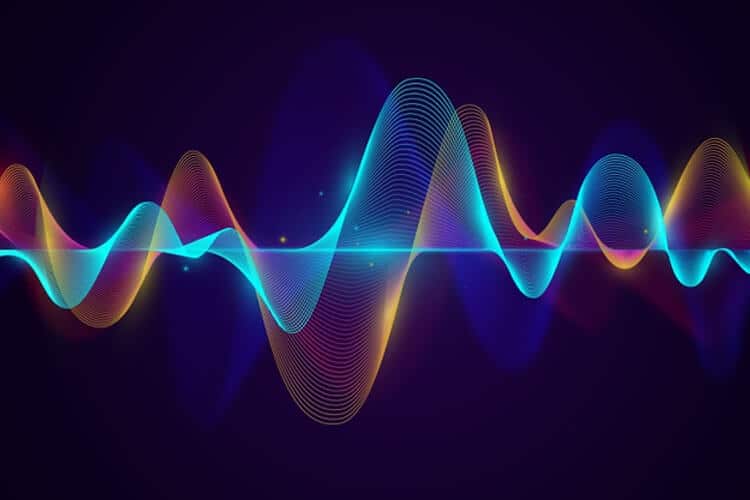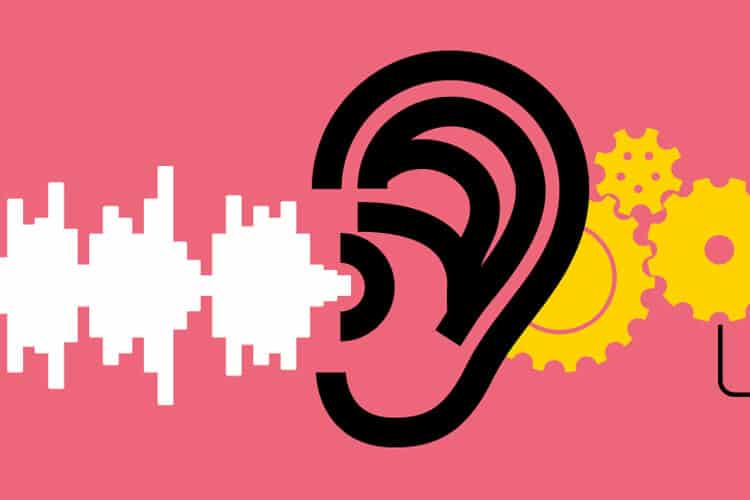
In general, sound is produced by mechanical vibrations moving in air, water and similar environments. Sound waves travel through the air through compression and spacing mechanisms, bounce off the outer auricle and turbinate and enter the ear canal. So, what is the sound source? What is the sound source? What are sound source examples? We think of sound as something we hear – something that makes noise. But in pure physics terms, sound is a vibration passing through matter.
What is Sound Source?

Sound is a mechanical wave. In physics, the object that makes a sound is called a sound source. For example, vocal cords, tuning forks, drums, etc. they are all sound sources. However, the sound source cannot be separated from the elastic environment around it. If the same object in space is in the same state, no sound wave can be produced if it is separated from the elastic medium. Meanwhile, the object is not a sound source.
Man lives in a perpetual world of sound, as he receives an unchanging source of information about the world. The speed of the wind, the chirping of birds, the speech of people and the roar of animals, the hum of thunder are the sound sources in nature that help man adapt to environmental conditions.
How does a person listen?

If we consider the human ear from the inside, you can see the so-called eardrum. It runs along the tunnel leading to the ear. Air vibrations from the sound source beat the eardrum, causing it to vibrate as well. Behind the eardrum is a bony cavity filled with three movable bones, the hammer, the anvil, and the head, named for their shape. These bones receive and initiate vibrations from the eardrum.
Deep in the ear, there is a fluid-filled channel, about 3 cm long, called the snail. Vibrations from moving bones create waves in a liquid, like waves in an ocean. Like underwater algae, thousands of hair cells ripple in a wave of liquid. These cells are basically important for hearing. Vibrations passing through them push electrical impulses from the auditory nerve to the brain. The brain also converts these electrical signals into music and sounds.
Where Does the Sound Come From? Is There a Specific Sound Source?
People make sounds with the help of vocal cords. If you put your hand on your throat during a conversation, you can feel the vibration. It is almost always possible to identify the sources of the sound. Sound waves are like waves in a wheat field in windy weather.
Air molecules collide and separate, and the wave through the air is a rhythmic contraction and expansion of the flow of air molecules – a kind of vibration. But other materials also transmit sound waves, for example a tree that is also a sound source. If you shout from one side of a closed wooden door, the screamer’s vocal cords will vibrate first, making the air vibrate in turn.
The wind makes the door wood vibrate, Then the vibration is transmitted from the door to the air and to the person standing on the other side of the door. In a cave, walls do not absorb or transmit sound like doors. They bounce back like a mirror light. Some valleys in Europe are famous for their echoes. For example, a sound from a hunting horn may be repeated 100 times until it finally stops.
How Much Is the Sound Source Separated?

Sound sources are of two types. These are natural sound sources and artificial sound sources. Natural sound sources are sounds found in nature. Artificial sound sources are sounds created by humans.
1) Natural sound sources:
Natural sound sources are bees or flies, the squeak of mosquitoes, the buzz of the vocal cords of humans and animals. If you put a large seashell in your ear, you can hear a distant sound. As tempting as the idea may be, the sound heard has nothing to do with the ocean. Instead, the ear hears the repeated echoes of all sounds outside the shell. Natural sound sources include the rustling of leaves and birds, the rumbling of spring, thunder during a storm, the chirping of crickets and the scourge of snow under your feet – the transmission of natural sound waves is endless.
- Wind
- animals
- People
- Thunder
- Rain
2) Artificial sound sources:
Everything is created by man, not nature, you can attribute to artificial sources of sound, for example: fork, bell, tram, radio, computer. You can do an experiment on how to make a sound wave. For experimentation, you need a ruler made of metal clamped in a vise. If you move on the ruler, you can see the stimuli, but the sound will not be heard. However, a mechanical wave is formed near the ruler. The charging range of the ruler is below the audio frequency, so the person does not hear the sound. In this experiment, 19. In the late 19th century, an instrument called a tuning fork was invented.
The sound is produced only when the body emits the sound frequency. Waves diverge in different directions. There must be a medium between the ear and the source of the sound. It can be a gas, a liquid, a solid surface, but necessarily a particle that transmits waves. Sound waves are transmitted only in such an environment. If there is no substance, there is no sound.
- Ring tone
- voice
- phone tone
- machine sound
Sound Wave System
Echo – Sound waves that reach the ear by being repeated from a smooth surface. For example, if you scream in a cave, you can momentarily hear your voice, fight against the cave walls and come back. Oceanic crust also works this way. The best examples of sound sources are shells with lots of blank cameras. They look like rooms in an empty house.
The walls of the shell are smooth, which means that the sounds near the sink, even the quietest of sounds, are repeated in the rooms. All echoes – from people’s speech, music or natural sounds – turn into a roar. A heartbeat can also be added to it, which opens the shell and discourages it. A wonderful effect created by the multitude of echoes heard from the noise of the surf.
Voice Change

No matter how much the man shouts at 100-200 meters, no one hears him except for the shouting on the phone. The word ” phone ” is translated from Greek as “distant voice”. During conversation with old-style phones, our voice is converted into electrical current and is carried in this way. During reception, the reverse process takes place. Such a current can travel any distance by propagating through the air like sound waves.
The microphone is built into the handset, which responds to fluctuations in the air that occurs during speech. The microphone converts these oscillations into alternating current. It spreads over the telephone line cables and reaches the subscriber at the other end of the line. However, since a person does not feel the sensation of alternating current, it is therefore necessary to convert them into audible sonic vibrations.
What does this is a small speaker in the handset. Electric waves affect the magnetic field, changing its strength. This causes the membrane to vibrate and create sound waves that are described as the caller’s voice.
What Sound Waves Can Humans Hear?
Waves that a person can hear only by hearing are called sound waves. Sound is human intelligible mechanical waves within a certain range. Research proves that human hearing organs receive waves ranging from 16 Hz to 20,000 Hz. There are also waves with a frequency of less than 16 Hz (infrasound) and greater than 20,000 Hz (ultrasound).
However, they are not included in the scope of audibility and are not felt by the person. Other frequencies differ from individual animals or insects, including fish, butterflies, dogs and cats, bats, dolphins. Sources are any body that creates oscillations with a sound frequency (16 to 20,000 Hz).
The perception of sound is a subjective process depending on the hearing organ and health status of the person. Microphones work the same as ears, but instead of the eardrum, the microphone consists of a small, thin metal plate attached to a magnet. As the air pressure on the plate changes, the magnet oscillates and an electrical charge is produced.











